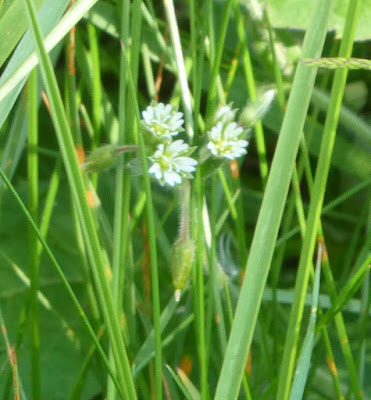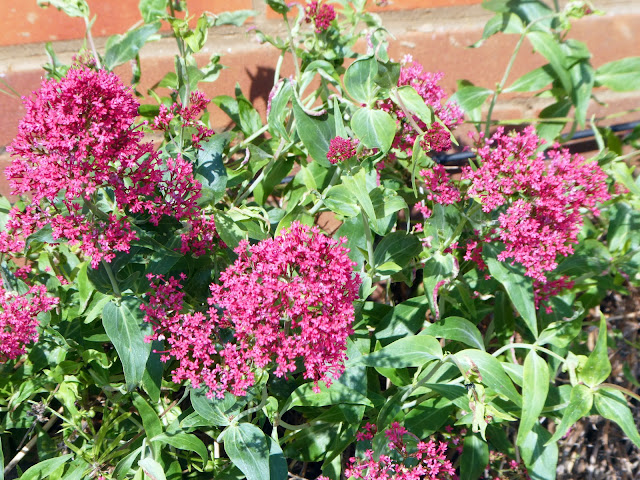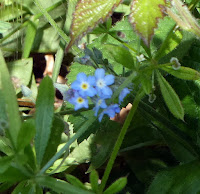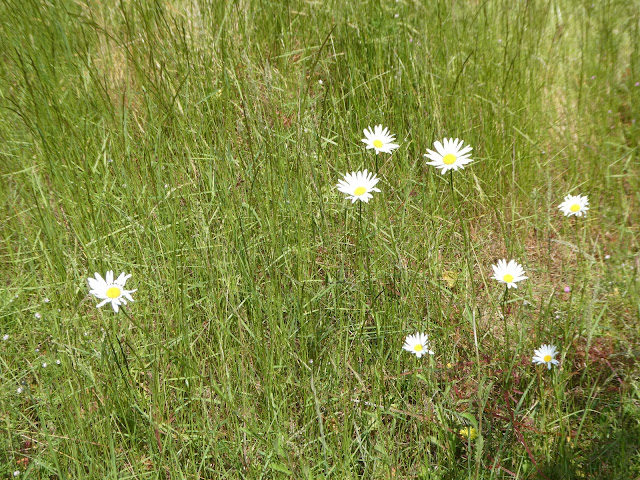 |
| 1. Poppy, possibly 'sown' by the birds (is it perhaps a cultivated specimen?) |
We had a plumber working away on a leaking valve this morning so I thought it might be a good moment to do a quick wildflower audit in our wild garden to gain a snapshot of what is showing up as we approach the longest day of the year. It has been a particularly chilly spring so far in my part of Suffolk. To be fair, the temperatures have risen in the last couple of days, but the north-east wind continues to make its presence felt.
I may put in some effort to check names etc. in due course, but the purpose of this audit was really just to take a quick photo as a record of what I saw (with added input from David). If I can name the species, I will. I always struggle to identify yellow 'dandelion-like' flowers, including sow thistle, hawkweed and cat's ear ... do let me know if you recognise an unnamed plant. It may be that two of these yellow plant pics are actually of the same species ...

2. 
3. Ribwort Plantain 
4. Daisy 
5. 
6. Dandelion (with Thick-legged Flower Beetle) 
7. Herb Robert 
8. Small-flowered Cranesbill 
9. Knapweed (first flower opened today) 
10. Oxeye daisy 
11. 
12. Goosegrass 
13. ?Chickweed 
14. Lesser Trefoil 
15. Buttercup 
16. Pink Valerian 
17. (?Wood) Forget-me-not 
18. Wood Avens 
19. Nettle 
20. Violet (flowers have died) 
21. 
22. 
23. Willowherb 
24. Purple Oxalis (garden escape?)
The photos that follow show how 'wild' a medium-sized suburban garden (ours) can look when it is largely left to nature.
 |
| Hummingbird Hawk-moths frequented this patch last year |
 |
| Long grass micro-meadow |
The hedgehog continues to visit most nights, and the frog reappeared in the mini-pond two days ago. Butterfly numbers have largely been down on last year, but we have had record garden sightings of Holly Blue.




